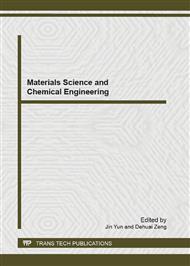p.869
p.875
p.885
p.893
p.900
p.904
p.909
p.915
p.921
Solution-Based Fabrication of Carbon Nanotube Gas Sensor by Using Dielectrophoresis and Spin-Column Chromatography
Abstract:
Single-walled carbon nanotubes (SWCNTs) gas sensor has attracted a great deal of attention because of their remarkable properties. The sensor response is attribute to the semiconducting CNT whose electronic properties depend on its chirality. The authors have previously found that the sensor response increased by using separated semiconducting SWCNTs from a mixture with metallic one. Since the electronic structure (metallic or semiconducting) of CNTs is governed by their chirality, a chirality-selective fabrication of CNT gas sensor is essential to improve their performance. In this study, we proposed chirality-based separation of semiconducting SWCNTs by using spin-column chromatography. Pristine CNT suspension was separated into three fractions that had different chiralities of semiconducting SWCNTs. Separated semiconducting CNTs of each fraction were used for fabrication of three CNT gas sensors by dielectrophoresis. Comparison of these sensor responses to NO2 revealed that sensor response depended on the chirality.
Info:
Periodical:
Pages:
915-920
Citation:
Online since:
May 2013
Authors:
Price:
Сopyright:
© 2013 Trans Tech Publications Ltd. All Rights Reserved
Share:
Citation:


